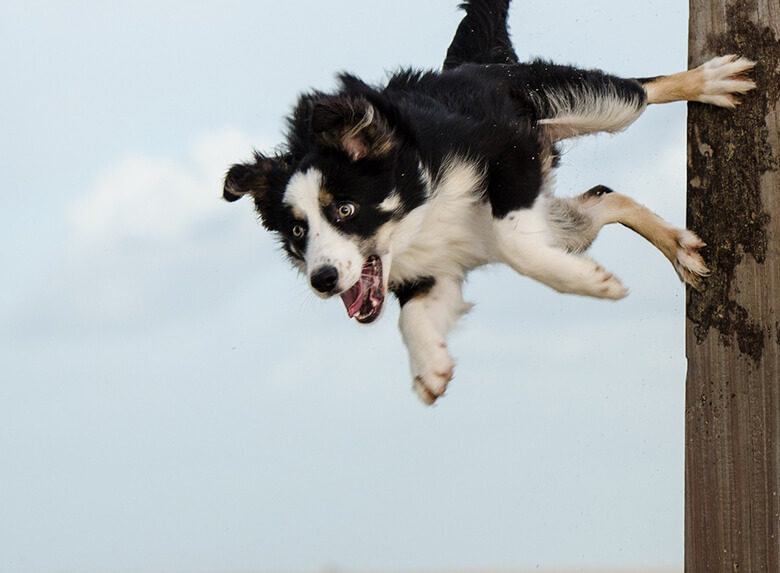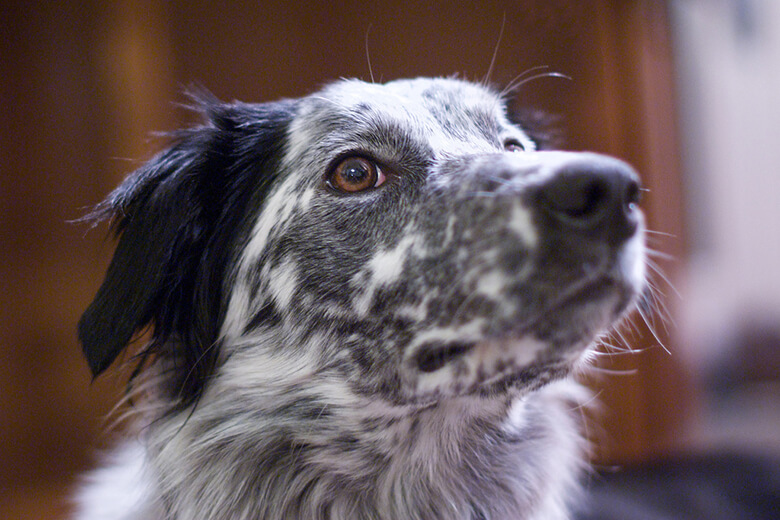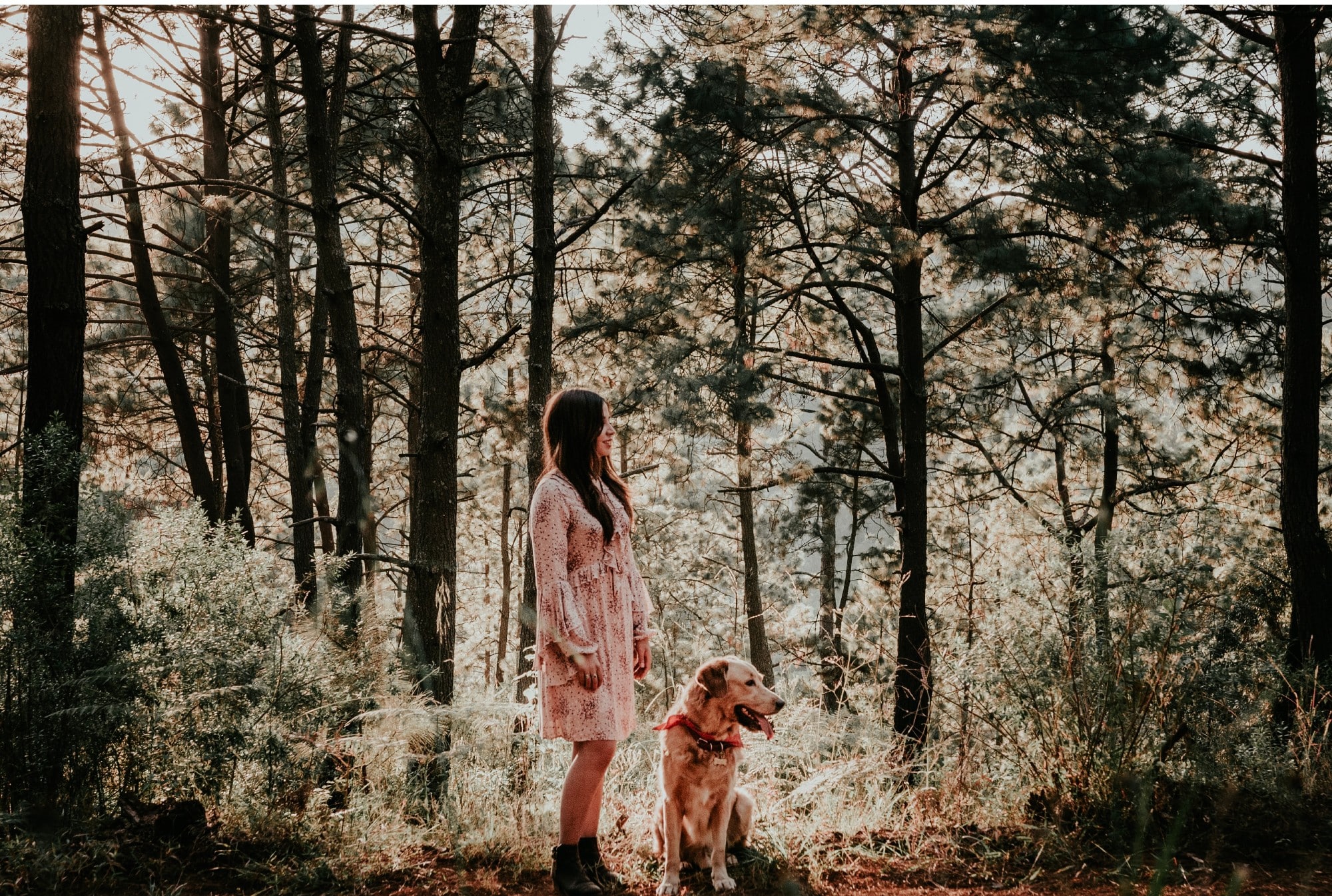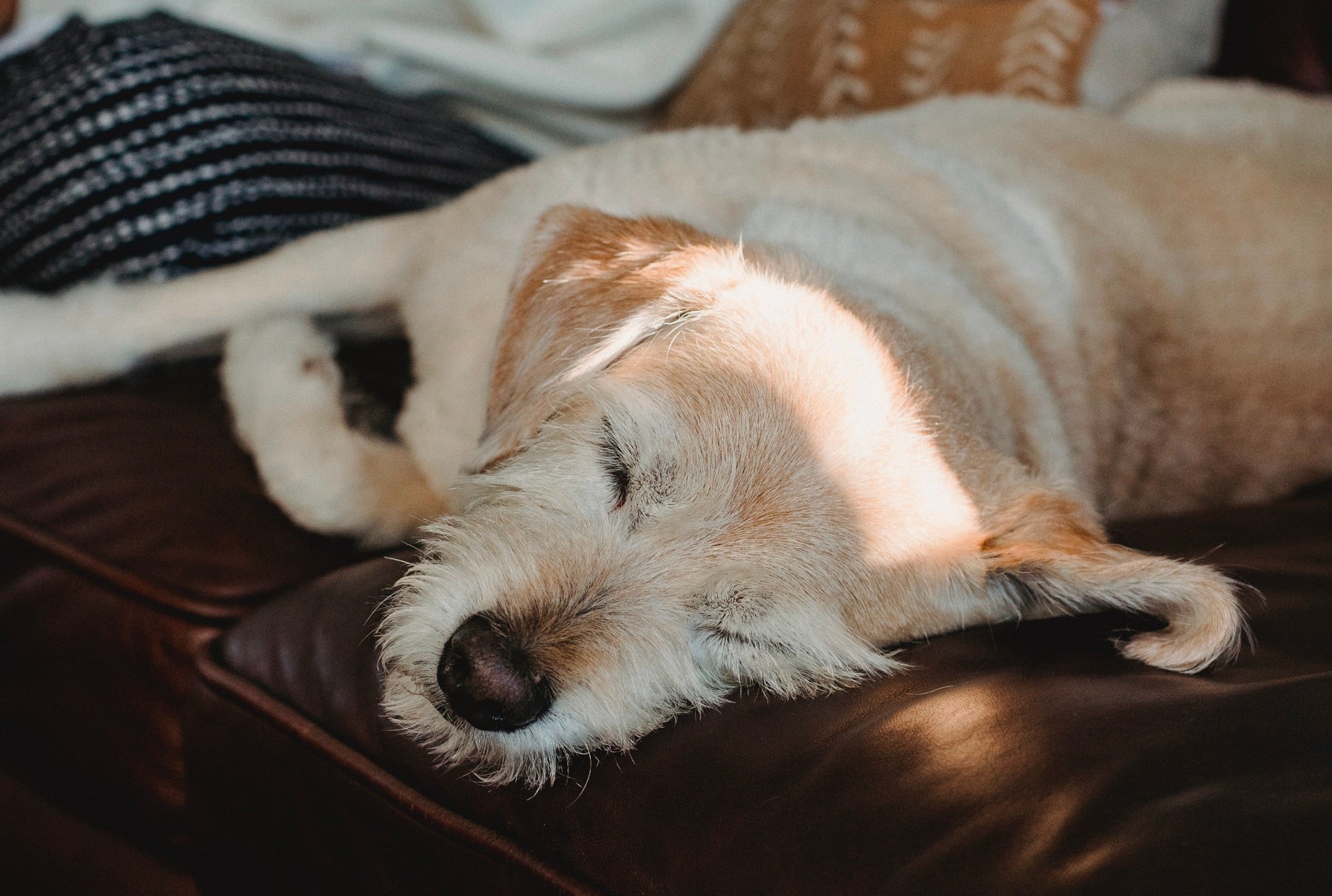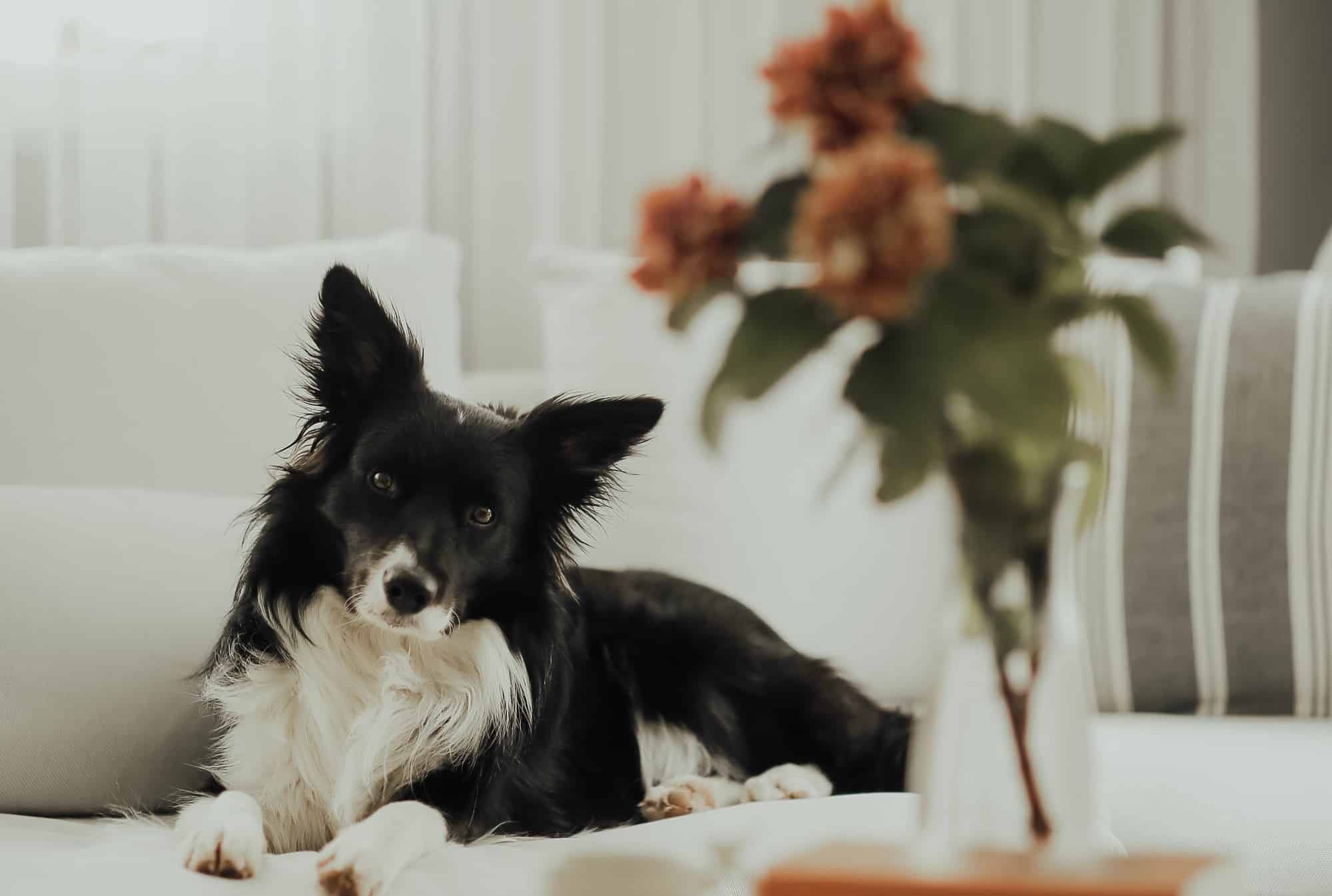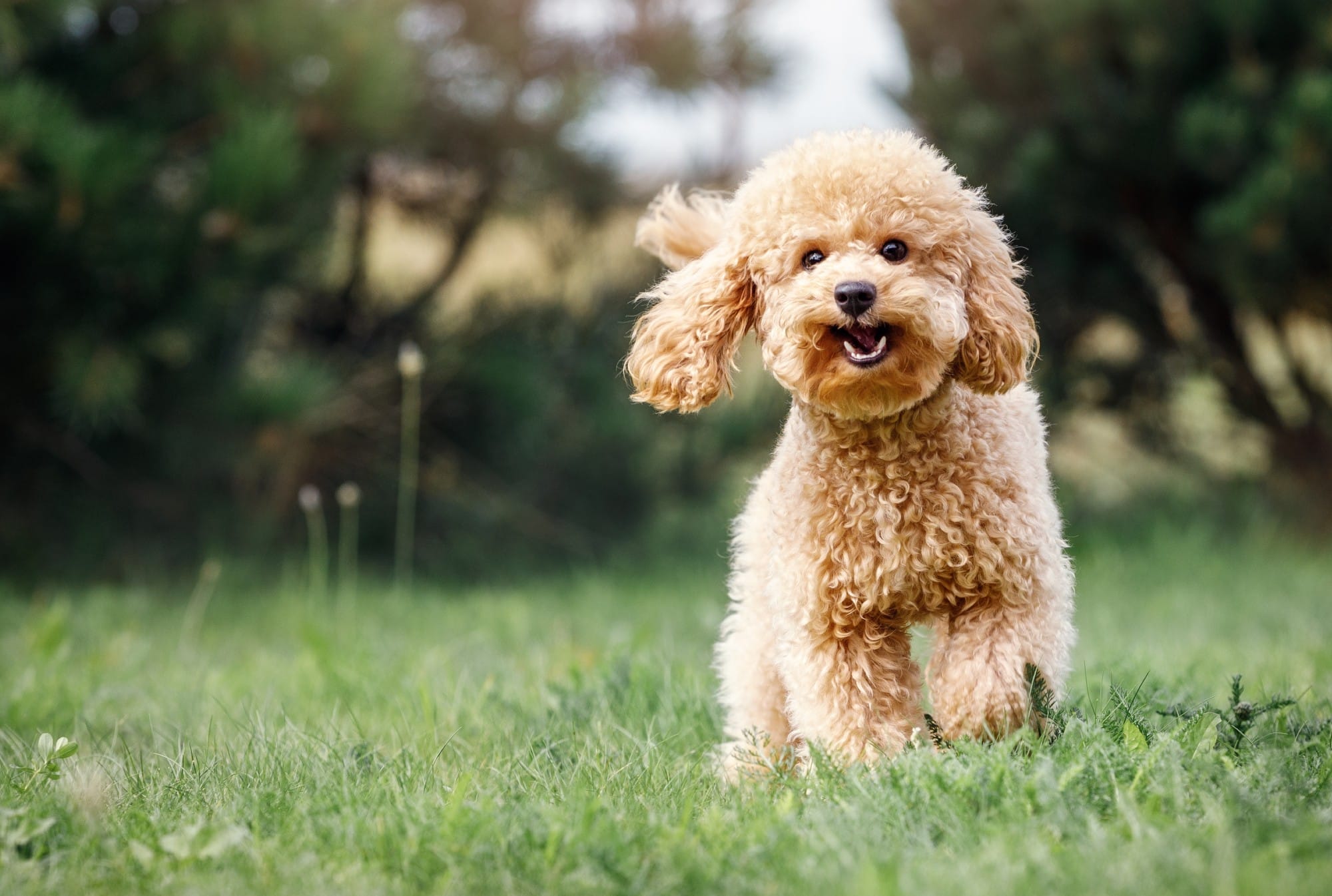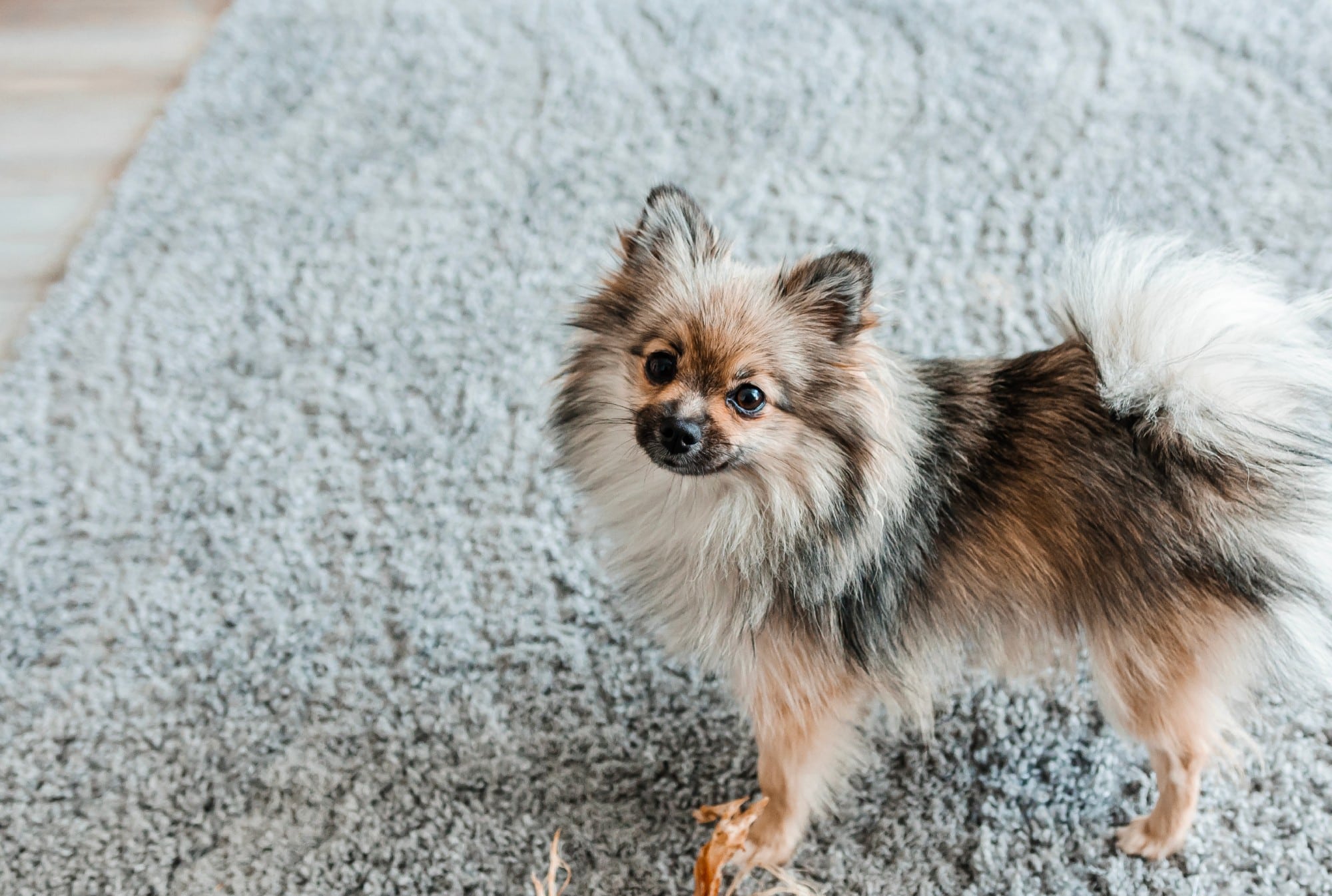If you have an oversensitive dog, you know it. Cowers during a thunderstorm? Check. Freaks out over fireworks? Check. Loud trucks are torture? Check. Howls when you leave the house, at the beeping of a truck backing up, skateboards, baby carriages, even plastic bags or leaves blowing in the wind? Check, check, check.
It’s painful to see our dogs suffer. A beloved dog with her tail between her legs, lowered head and shaking flanks is heartbreaking. We hug them, coddle them, wrap them in blankets and towels, purchase white noise machines, stuffed animals with heartbeat tracks, ThunderShirts, CBD oil and even resort to psychotropic drugs. Sometimes it works. But what do we do when it has no effect?
Related: Everything You Need to Know About Introducing a Puppy Mill Dog Into Your Home
The National Center for Biotechnology Information refers to oversensitivity in dogs as Canine Sensory Processing Sensitivity. “In companion animals, the assessment and understanding of personality has important implications for the welfare of both pets and owners and may facilitate prevention and treatment of behavioral problems by animal behavior specialists,” the research concluded. They used a detailed questionnaire filled out by owners of different breeds to determine factors of CSPS, which included:
Arousability — ease of excitation
- My dog is easily stressed, is easily overwhelmed by situations
- My dog gets nervous quickly or is often nervous
- My dog tends to be uncertain and/or careful;
- My dog startles easily
- My dog has trouble when people touch him and/or when things touch him/her
Perception/reactivity–low sensory threshold
- My dog is always on the alert
- My dog reacts strongly to visual stimuli; My dog tends to be restless
Emotionality/aesthetic sensitivity
- My dog reacts to small changes in voice, i.e. changes in intonation and volume
- My dog reacts when we argue at home
- My dog is emotional, i.e. reacts strongly to positive and/or negative events
As you can see, identifying an oversensitive dog can mean spotting qualities subtler than shaking during a thunderstorm. These more nuanced behaviors can tell you a lot about what will work best when training your dog and providing the most enriching living environment. It may also explain why your pup is always staring at something on the ceiling that only he can see. (Ghostbusters anyone?) Helping a dog who is frightened, anxious or hyperactive requires a more direct strategy.
Hyperactivity
Dogs sometimes are by nature hyperactive, and sometimes it’s a response to “good leadership lacking in the dog’s life,” according to dog behaviorist Karen Rosenfeld, aka the Ottawa Valley Dog Whisperer. Signs that you have a hyperactive dog (if you haven’t figured out why he’s bouncing off the walls) include overreacting to:
- Physical stimuli (sound, sight, touch, smell)
- Emotional Stimuli (emotions of others)
- Easily over-whelmed (‘flooded’ by too much stimuli)
As counterintuitive as it sounds, a hyperactive dog does not do a lot more activity than “normal” active-level dogs. Unstructured exercise often results in more hyperactivity. So, what does this dog need?
Related: How to Stop Your Dog From Tearing Up Your Home When You Are Gone
Structured activity, like daily running with your dog, an hour-long game of fetch or Frisbee, and long, vigorous walks will burn off her extra energy. That allows the hyper pup to rest and relax afterwards, which is what the hyperactive dog needs to stay emotionally healthy. These dogs also need routine more than other dogs. You need to provide vigorous exercise on a daily schedule and stick to it. Then you need to provide an irresistible spot for your dog to chill out. A super comfy memory-foam bed, a crate, a corner loaded with blankets, whatever your dog desires that will help him calm down (the ultimate chill pad is the Zen Crate).
A hyperactive dog will not do well being left alone for many hours every day. If this is your schedule, you need to find a dog walker who can come in, exercise and entertain your dog at least once a day — or be prepared to come home to a doggie lunatic. Mental stimulation is also important to burn off extra energy. Try interactive puzzles and food puzzles like treat balls and Kongs. Other activities that help include dog sports like agility, flyball, freestyle, or disc dog and learning new tricks and obedience routines. Experiment to find out what works best for your dog.
Fear and Anxiety
The most important factor in helping a dog with fear, phobias or anxiety is pinpointing the cause. It may not be obvious. Even if he trembles during a thunderstorm, is it the noise, the drop in atmospheric pressure, the wind or the sound of hard rain? If it’s thunder, this can transfer then to other situations where loud noises occur, such as firework displays or even a car backfiring.
Fearful behavior includes:
- Panting
- Shaking
- Cowering
- Whining
- Hiding
Anxiety is the anticipation of future danger that triggers visible symptoms and physical reactions. These include:
- Panting
- Pacing
- Whining
- Urinating
- Tense muscles
- Destructive activity (including self-destructive activity like excessive licking or biting of their body)
- Shaking
Obviously, separation anxiety manifests when dogs are left alone and can cause behavior including:
- Barking
- Howling
- Urinating or Defecating
- Digging
- Chewing
- Destructive behavior
- Trying to escape
Some of this may be due to an abusive past, a prior abandonment or neglect. It could also result from a lack of socialization, which is the crucial process of introducing puppies to as many situations, objects, and people as possible.
Phobias are somewhat different. They tend to develop when dogs are older, from 1 to 3 years, when fear has had time to intensify. Phobias trigger the body’s flight or fight syndrome, flooding the system with adrenalin. The signs of fear and phobias in dogs include:
- Trembling
- Tucked tails
- Flattened ears
- Drooling
- Licking the lips
- Yawning
- Cowering
- Hiding
- Whale eyes (when the whites of the eyes are visible)
It’s very important to rule out any medical condition before embarking on any behavior modification program or even anti-anxiety medication. If your dog exhibits any of these symptoms on a regular basis, make an appointment with your veterinarian. If a medical condition is ruled out, ask your doctor if he or she can recommend a behaviorist.
If you’re looking on your own, find a behaviorist that deals specifically with fearful dogs. Check out Facebook groups and organizations like CARE (Counterconditioning and Positive Reinforcement (R+) are Essential) for information and resources.
Never use negative punishments to deal with a fearful or anxious dog; it will only make it worse and ultimately, much harder for you to help your dog. If all else fails, you can try medication, but remember, these drugs usually take some time to work, so don’t expect an instant change. Also, watch for potential negative side effects as they can be dangerous. These include:
- Confusion
- Hyperactivity
- Trembling
- Seizures
- Rapid breathing
- Rapid heart rate
- Increased body temperature
You can also use natural remedies to ease anxiety along with behavior modification work. These include CBD oil, Rescue Remedy, Stress Gold, Dr. Harvey’s Relax, and others. You’ll need patience, time, and commitment, but don’t give up on your hypersensitive dog. She needs you.
Related: The First Command You Should Teach Your Dog to Build a Lasting Bond














